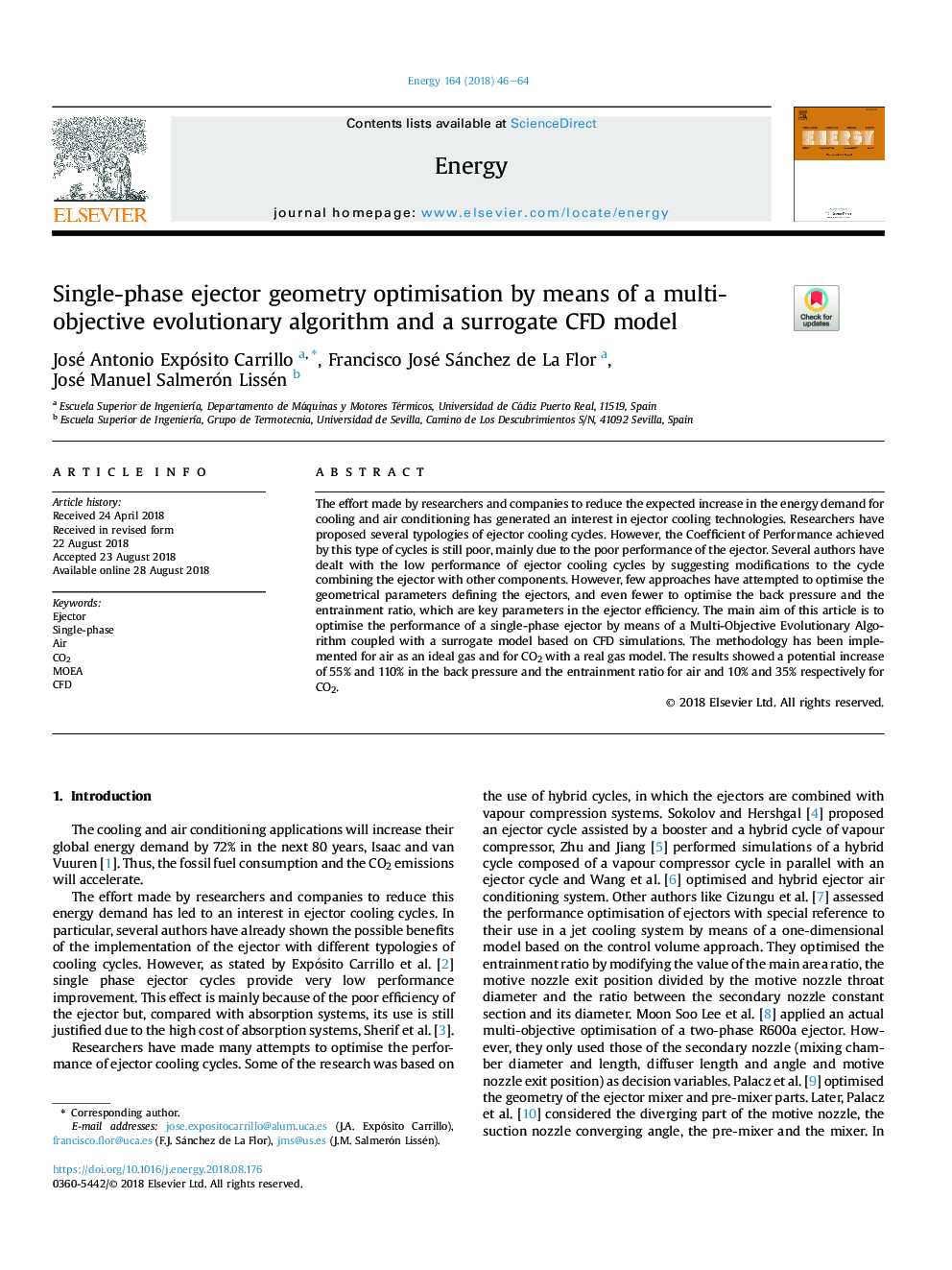| Article ID | Journal | Published Year | Pages | File Type |
|---|---|---|---|---|
| 8961682 | Energy | 2018 | 19 Pages |
Abstract
The effort made by researchers and companies to reduce the expected increase in the energy demand for cooling and air conditioning has generated an interest in ejector cooling technologies. Researchers have proposed several typologies of ejector cooling cycles. However, the Coefficient of Performance achieved by this type of cycles is still poor, mainly due to the poor performance of the ejector. Several authors have dealt with the low performance of ejector cooling cycles by suggesting modifications to the cycle combining the ejector with other components. However, few approaches have attempted to optimise the geometrical parameters defining the ejectors, and even fewer to optimise the back pressure and the entrainment ratio, which are key parameters in the ejector efficiency. The main aim of this article is to optimise the performance of a single-phase ejector by means of a Multi-Objective Evolutionary Algorithm coupled with a surrogate model based on CFD simulations. The methodology has been implemented for air as an ideal gas and for CO2 with a real gas model. The results showed a potential increase of 55% and 110% in the back pressure and the entrainment ratio for air and 10% and 35% respectively for CO2.
Related Topics
Physical Sciences and Engineering
Energy
Energy (General)
Authors
José Antonio Expósito Carrillo, Francisco José Sánchez de La Flor, José Manuel Salmerón Lissén,
